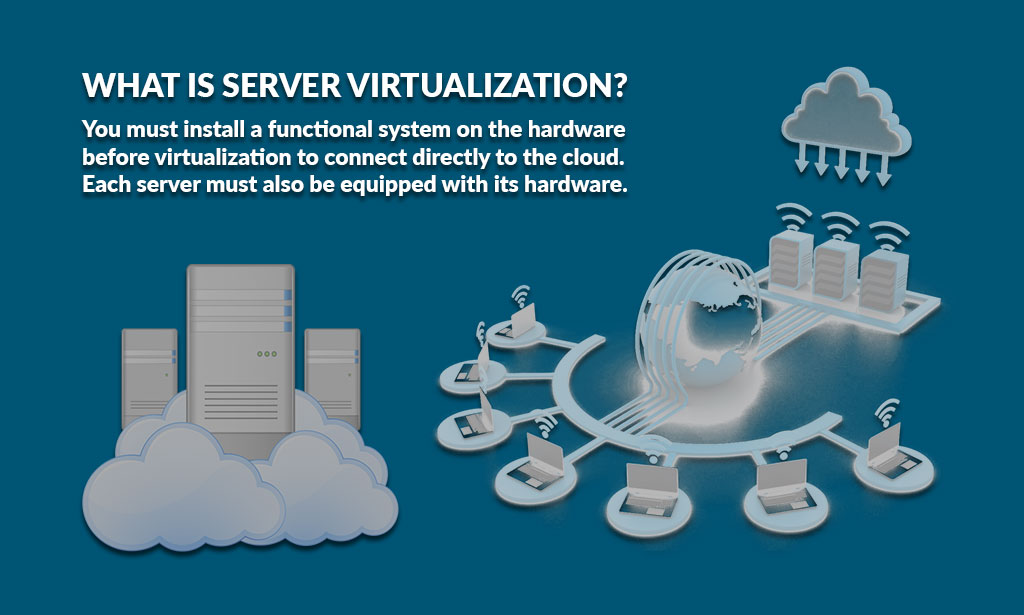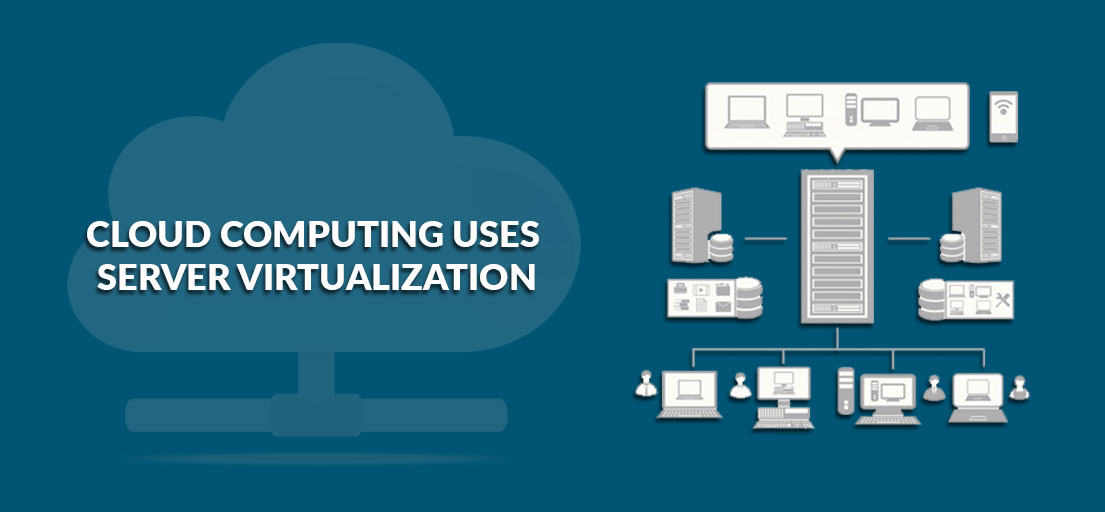Server virtualization implies that a single physical server produces various server instances. Each instance of the server is a virtual machine isolated. You will run a different operating system in any virtual world.
Here at Grid Hosting, you will read more about how does cloud computing uses server virtualization along with what happens when a server is virtualized quiz and why you should use this versatile technology.
What is Server Virtualization?
You must install a functional system on the hardware before virtualization to connect directly to the cloud. Each server must also be equipped with its hardware.
During routine operations, dedicated servers use on average just 15% of their power. While it has many benefits over virtualization, it is in many ways a waste of energy to run the program on bare metal servers. Also, program or hardware errors have to be fixed by hand on all servers.
Therefore, resource usage was to be enhanced and the customers’ operating systems isolated for security purposes.

As a solution to the above problems, server virtualization was implemented. You can “break up” the physical server into several virtual servers using virtualization software. In doing so, without investing in more hardware you can make the best use of your physical capital.
How does server virtualization work and cloud computing uses server virtualization?
How does a server virtualization done in cloud computing? Lucid is the underlying concept of the virtualization of servers. Every virtual server functions as a single physical unit skilled of running its operating system. Technology especially built to this end is utilized here. A program administrator can turn a single physical server into many servers. Thus, all the computing power of the computer is used by these several servers.
CPU functions with several processors that enable the completion of many challenging tasks. In this context, the virtual server especially devotes itself only to a specific mission. Most servers use their total capability to such a small extent. However, the wider the data network, the more complicated is the server this is another problem.
Does Cloud Computing Use Server Virtualization?
Yes, server virtualization can be used in the cloud. The virtualizing server is the mechanism by which a computer virtual instance is created, like a virtual server or a virtual operating system. Virtualized hardware is mostly used to provide their cloud customers with standard versions. The cloud provider must give the current update to its cloud customers if a newer version of this application is launched.
Now we will show you several of the most common types of server virtualization in cloud computing and how they would transform your company.
Applications Virtualization
Application of virtualization in cloud computing is like notebooks, smartphones, and iPad are virtualized and distributed from a cloud to the computer of the end-user. So users would be willing to use the software straight from their computer, if there is an Internet connection, rather than logging into their office computing. This is particularly common with companies that require their applications on the go.
A remote program may work on a server and some kind of remote show protocol is utilized by the user’s link to the user machine. Knowing that a wide variety of device operators and clients are experienced online, it would be very convenient to set remote monitors for applications.
You will run a copy of the program in a streaming application on the cloud and then provide access to other customer desktops. The method of upgrading becomes easier when the application is streamed because only the current edition would allow you to set up another streaming client and the end-users refer to the new version of the application.
Server Virtualization
Server virtualization makes it possible to use several virtual machines on one physical server. The virtual servers share physical cloud resources that help optimize the use of the physical server resources. The Disk, storage, processing, and networking are resources of share virtual machines. All these resources are offered via the physical hypervisor server to virtual machines.
The hypervisor is the device and the actual box. The virtual machine turns unlike other virtual machines on a similar computer. Digital computers may have multiple operating modes and are segregated.
The virtualization of servers is a way to merge apps used on different physical servers with hypervisor tech, which now runs on the same physical server represented by virtual machines.
Desktop Virtualization
Desktop virtualization requires the user’s operating system to be remotely stored on a computer in the data center. It enables the user directly from various computers to reach their workspace from anywhere. For those that use special operating systems, a virtual desktop is needed apart from Windows Server. The most important advantages of system virtualization include application mobility, functionality, upgrades and patches, and easy handling of program installation.
Storage Virtualization
Data Virtualization is the method of combining physical storage with software to represent it seems to be a single storage unit in a virtual world. Variables may be created among storage virtualization in cloud computing and traditional virtual machines when all physical hardware and resources are accessible and abstract.
Various types of common virtual machines and virtual storage are available. The virtual system is a collection of records, though virtual storage normally works on the storage manager that is built utilizing the software.
A method of storage virtualization was introduced in the storage functions for several years. Features like Photos and ATTACK take physical drives and view them in a virtual environment. These features can include a format to support output or to add storage resilience as a host volume.
Storage sellers have also introduced disk virtualization inside the operating system with their particular selections. This form is referred to as internal storage virtualization. Veritas also implements external cloud virtualization with many other storage providers.
Virtualization of hardware
It is possibly the most prevalent form of virtualization; a “hypervisor” virtualization is made feasible by the VM manager. The hypervisor generates and consolidates virtual machines and operating systems into a large physical cloud, making all the hardware resources more efficiently used. It also allows users to run diverse operating systems on similar computers simultaneously.
Conclusion
Cloud computing uses server virtualization because the virtualization of the server in the cloud computing industry helps a lot in IT for the difficult activities of each virtual server. It saves expenses and can be used on other programs. Here at Grid Hosting, I have described what server virtualization is and server virtualization in cloud computing examples. For more information related to this topic, you can call our experts for guidance.







